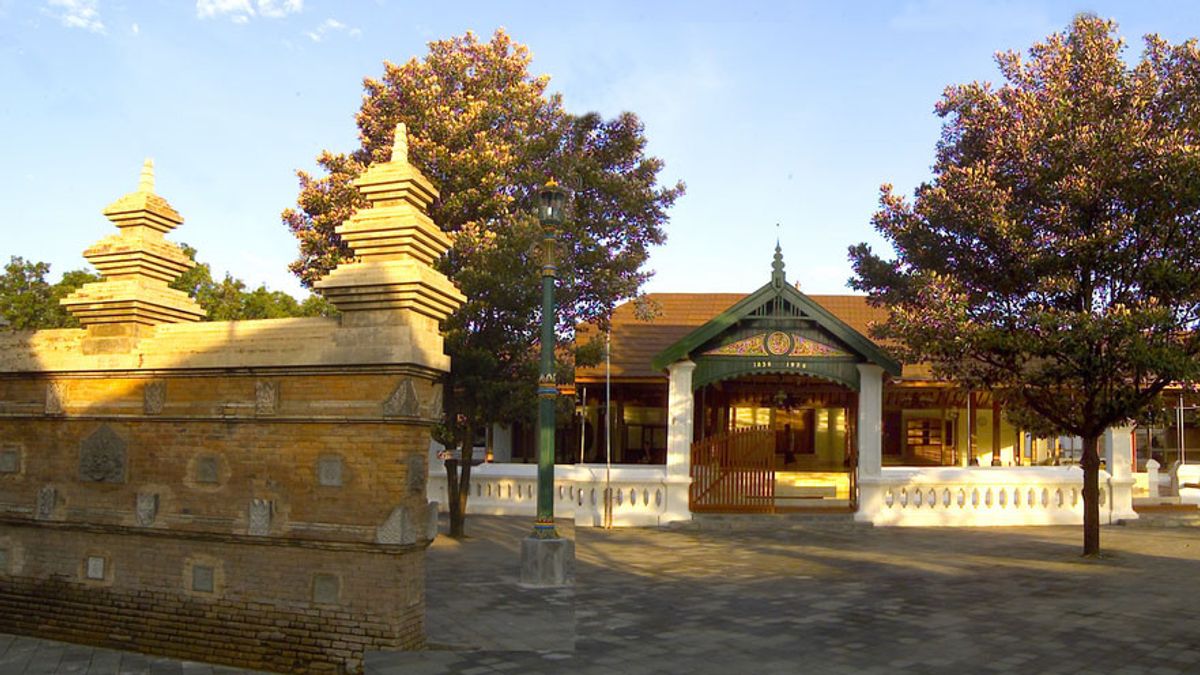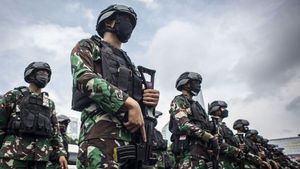JAKARTA - The Islamic Mataram Kingdom is different from the Mataram Kingdom which was founded around the 8th century AD. Interestingly, the existence of this kingdom still exists today because its culture is deeply rooted in people's lives, especially Java.
During its heyday, the territory of the Islamic Mataram Kingdom covered almost the entire island of Java, including several areas that are now Yogyakarta, Central Java, East Java, and parts of West Java.
Founder of the Islamic Mataram Kingdom and its expansionDanang Sutawijaya or who has the title "Panembahan Senopati ing Alaga Sayidin Panatagama Khalifatullah Tanah Jawa" (Panembahan Senopati) is the founder of the Islamic Mataram Sultanate.
Panembahan Senopati ruled Mataram from 1587 to 1601, before being replaced by his son Panembahan Seda ing Krapyak who was the father of Sultan Agung.
At first, Danang Sutawijaya replaced his father Panembahan Senopati in the power relay. Sutawijaya had dreams like his father to liberate Mataram from the power of Pajang.

Sutawijaya's desire to make relations between Mataram and Pajang deteriorate and lead to war.
The Pajang Sultanate, which then lost the war, made Sutawijaya the king of Mataram. This moment was made after the ruler of Pajang Hadiwijaya or Joko Tingkir died in 1587.
After the title Panembahan Senopati, Sutawijaya then built his kingdom in Kotagede, an area in Yogyakarta which is now known as a center for silver handicrafts.
In order to expand its territory, Panembahan Senopati expanded to the surrounding area by defeating Ki Ageng Mangir and Ki Ageng Giring.
Sultan Agung and the Predicate of the Famous King of the Islamic Mataram KingdomSultan Agung, who was the grandson of the founder of the Islamic Mataram Kingdom, was the most famous king and was later made a National Hero. The prosperity and expansion of the territory could not be separated from the reign of Sultan Agung.
In his research entitled Sultan Agung's Strategy in the Expansion and Islamization of the Islamic Mataram Kingdom, one of the strengths of Sultan Agung is his broad political insight.
The Third King of Mataram Islam, has the view that Mataram's power is a complete and unified unity. Then power, for Sultan Agung is something as a whole. This made him have the ambition to unite all of Java.
Meanwhile, Javanese historian Merle Calvin Ricklefs stated that one of the strengths that was possessed during the reign of Sultan Agung was military politics which was adopted from the previous Javanese kings.

Ricklefs said that Sultan Agung was cruel to his political opponents. Apart from that, Sultan Agung also took advantage of a culture of grandeur and wealth to attract loyalties from powerful people.
During his leadership, Sultan Agung managed to maintain a balance between centralized legitimacy and decentralized administration, by relying on military strength (Ricklefs, 2005).
Region and Location of the Islamic Mataram KingdomBefore Sultan Agung ruled, the Islamic Mataram area only covered Central Java. However, after Sultan Agung expanded the Kerajan Mataram area to cover all of Central Java, East Java and West Java (except Batavia and Banten), here is the map.

Then when the VOC entered the archipelago and entered into the Giyanti Agreement, the Mataram Sultanate area experienced a narrowing.
The agreement represented by Sunan Pakubuwana III and several groups from Prince Mangkubumi then divided the territory of the Islamic Mataram Kingdom.
The Giyanti Agreement, which was ratified on February 13, 1755, certainly benefited the VOC, because the Javanese Kingdom became subject to its rule.
The Islamic Mataram area after the Giyanti Agreement was then divided into two, namely the area to the east and to the west of the Opak River.

The eastern Mataram region of Sunga Opak, which is now marked by an area that crosses the Prambanan area, is controlled by Sunan Pakubuwana III, who is domiciled in Surakarta.
Then the Mataram area west of the Opak River was controlled by Prince Mangkubumi who was later appointed as Sultan Hamengkubuwana I in Yogyakarta.
One of the contents of the Giyanti Agreement which benefited the VOC was a clause if the VOC could determine the kings who controlled the two areas of Mataram.

Mbang Lampir or Kembang Lampir is a petilasan or place for Ki Ageng Archery to meditate to get a revelation on the establishment of the Mataram Kingdom.
2. Mataram Kingdom CannonThe cannons that were named Segara Wana and Syuh Brata were gifts from the Netherlands for their agreement with the Mataram Kingdom.
3. MosqueThere are several mosques that are legacies of the Islamic Mataram Kingdom, including the Grand Mosque of the State, the Jami Pakuncen Mosque, and the mosque at the Kota Gede Tomb.
4. Ward Duda 5. Rumah Kalang 6. Tomb of the King of Mataram in Imogiri Sastra as a Source of Islamic Mataram HistoryApart from several buildings and cultures (Grebeg Puasa and Grebeg Maulud) which are the historical sources of the existence of Islamic Mataram in the past, literature is also an interesting historical relic to be discussed.
As a king, Sultan Agung paid special attention to literature with his creation in several works of Serat Sruti, Serat Sastra gending, Serat Jayalengkara, and Serat Panji Asmararupi.
Partini (2010) writes that Sultan Agung's Serat Sastra Gending contains the teachings of noble character, mysticism and inner and outer harmony.
Then Serat Nitipraja teaches the morality of the rulers in carrying out obligations, the ethics of subordinates to superiors, and the relationship between the people and the government.
Sultan Agung's goal in writing Serat Nitipraja is that society and the state are in harmony. In addition, roundness between ego, present, and life is the deepest meaning of Gending Literary Fiber.
Another legacy of the Islamic Mataram Kingdom is Serat Surya Alam which is a book that contains a collection of legislation. This fiber also proves the greatness of Sultan Agung as a statesman.
In addition to literary heritage, the creation of the Sultan Agung calendar (Anno Javanico or Javanese calendar) also proves the advancement of Islamic Mataram civilization in the past.
Apart from historical sources of the Islamic Mataram Kingdom, follow other domestic and foreign news only at VOI, Time to Revolutionize the News!
The English, Chinese, Japanese, Arabic, and French versions are automatically generated by the AI. So there may still be inaccuracies in translating, please always see Indonesian as our main language. (system supported by DigitalSiber.id)









